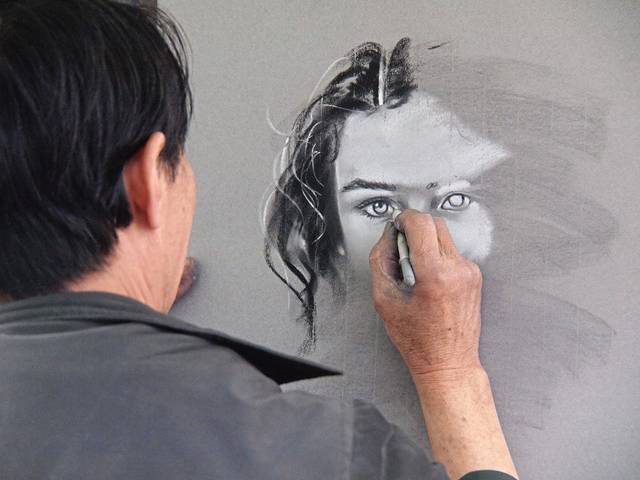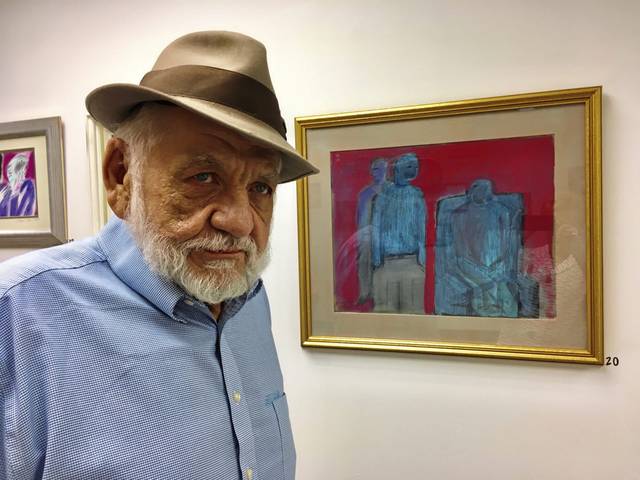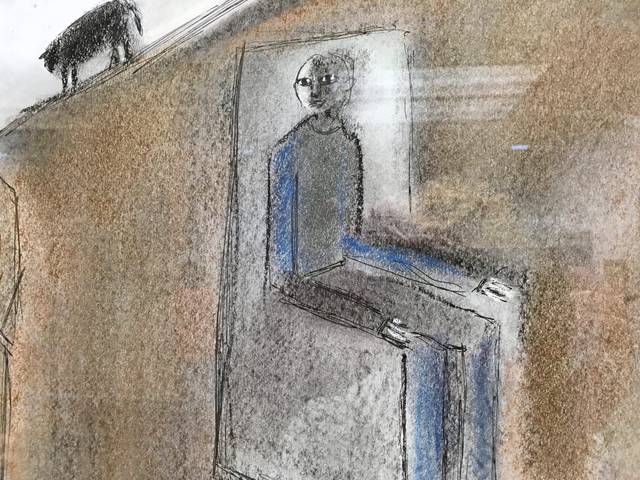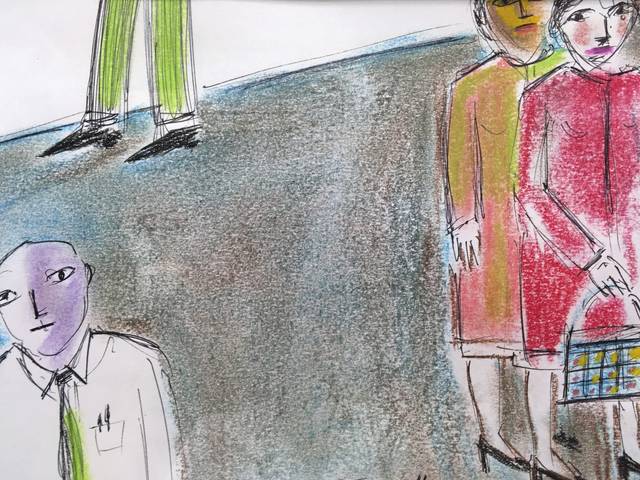Art therapy helps people explore and resolve many issues
Larry Beaver of Jeannette is known in area art circles as the creator of beautiful pastels.
His work is showing in “Trance,” a solo retrospective exhibition running through June 9 at You Are Here Gallery in Jeannette.
He’s also been featured in shows in the Latrobe and Greensburg art centers, Keynote Cafe in Jeannette, Dv8 Espresso Bar and Gallery in Greensburg and the Hurn Museum of Contemporary Folk Art in Savannah, Ga.
Beaver is a prolific artist despite having a diagnosis of paranoid schizophrenia — along with, he says “depression, anger and bipolar disorder.”
He says his art is a kind of therapy. When he’s working, he’s totally focused on the work itself. His thoughts aren’t traveling in directions that cause him to become upset. He’s calm.
“People ask me, ‘What are you thinking when you make pictures?’ ” he says. “I’m not thinking anything. I just want to make pictures all the time.”
In a sense, Beaver is doing for himself what art therapists do in guiding clients to use artistic expression to understand emotions, reduce anxiety, manage addictions and improve self-esteem, among other things.
Lifelong course
“Someone with schizophrenia has a lifelong course. There’s no therapy to cure it, as far as we know,” says Dr. Richard Withers, a psychologist with Allegheny Health Network.
Symptoms can include hallucinations and delusions.
“Schizophrenia messes with the ability to think clearly, to keep your mind on one thing and organize thoughts,” he says. “(People with schizophrenia) make loose associations, jump from one thing to another.
“Because of this, people with schizophrenia tend to withdraw and become very apathetic and have no real engagement with life,” he says.
Withers says medications provide relief for many symptoms, but there also are two ways art therapy can help.
“It helps to express feelings, to make sense and give some kind of meaning to what you are going through,” he says. “It also is helpful in expressing what you’re feeling to other people. Therapy, in general, is about communication.”
Great benefits
Art therapy can benefit just about anyone, says Dana Elmendorf, program director of the Seton Hill University Graduate Art Therapy Program.
“Individuals, groups and families can engage in the therapeutic use of art to great benefit,” she says. “Art therapy is used across a range of ages and populations, both children to adults.”
According to the American Art Therapy Association, people use art therapy to address issues including mood disorders, communication and learning disorders, neurological and neurocognitive disorders, post-traumatic stress disorder, traumatic brain injury and difficulties related to other medical conditions, domestic abuse, natural disasters and collective trauma, issues of identity and sexual orientation and major life transitions.
Art therapists work in private counseling practices, schools, hospitals and clinics, psychiatric and rehabilitation facilities, senior communities and even museums.
“This is not something new. People have been using art forms to share thoughts and feelings since the dawn of time,” Elmendorf says. “You don’t have to be an artist to engage in it — there’s no right or wrong way to do art.”
Typically, the therapist and client will talk as the client engages in art making, Elmendorf says. “There can be a wide-open invitation to make something, or it can be directive, to make a piece of art about something specific.”
An example of a directive exercise, she says, would be giving the client a small box to decorate, with images on the inside of the box representing the client’s image of self and those outside representing how others see the person.
“It’s a big myth that you can look at a piece of art and know what’s going on inside of a person,” Elmendorf says. The art making is helpful as a vehicle to reveal underlying issues to both the therapist and client.
Express yourself
Elemendorf says there is research that shows these benefits to the practice of art therapy:
• “Art making allows people to tap into and resolve trauma issues.”
• “It allows for problem-solving. It helps you to put a concern or problem on paper and look at it in a new way or from farther away.”
• “Art making gives a sense of release — an ‘I can do this’ feeling.”
“At the end of a session, if we walk out and I know more about the person, but they don’t know more about themselves, that’s not the goal,” she says.
“It’s a process of expressing oneself. We have time to talk things through and times when talking doesn’t happen,” she says. “It’s an opportunity for people to work through things in ways that go beyond words.”
Shirley McMarlin is a Tribune-Review staff writer. You can contact Shirley by email at smcmarlin@triblive.com or via Twitter .
Remove the ads from your TribLIVE reading experience but still support the journalists who create the content with TribLIVE Ad-Free.




